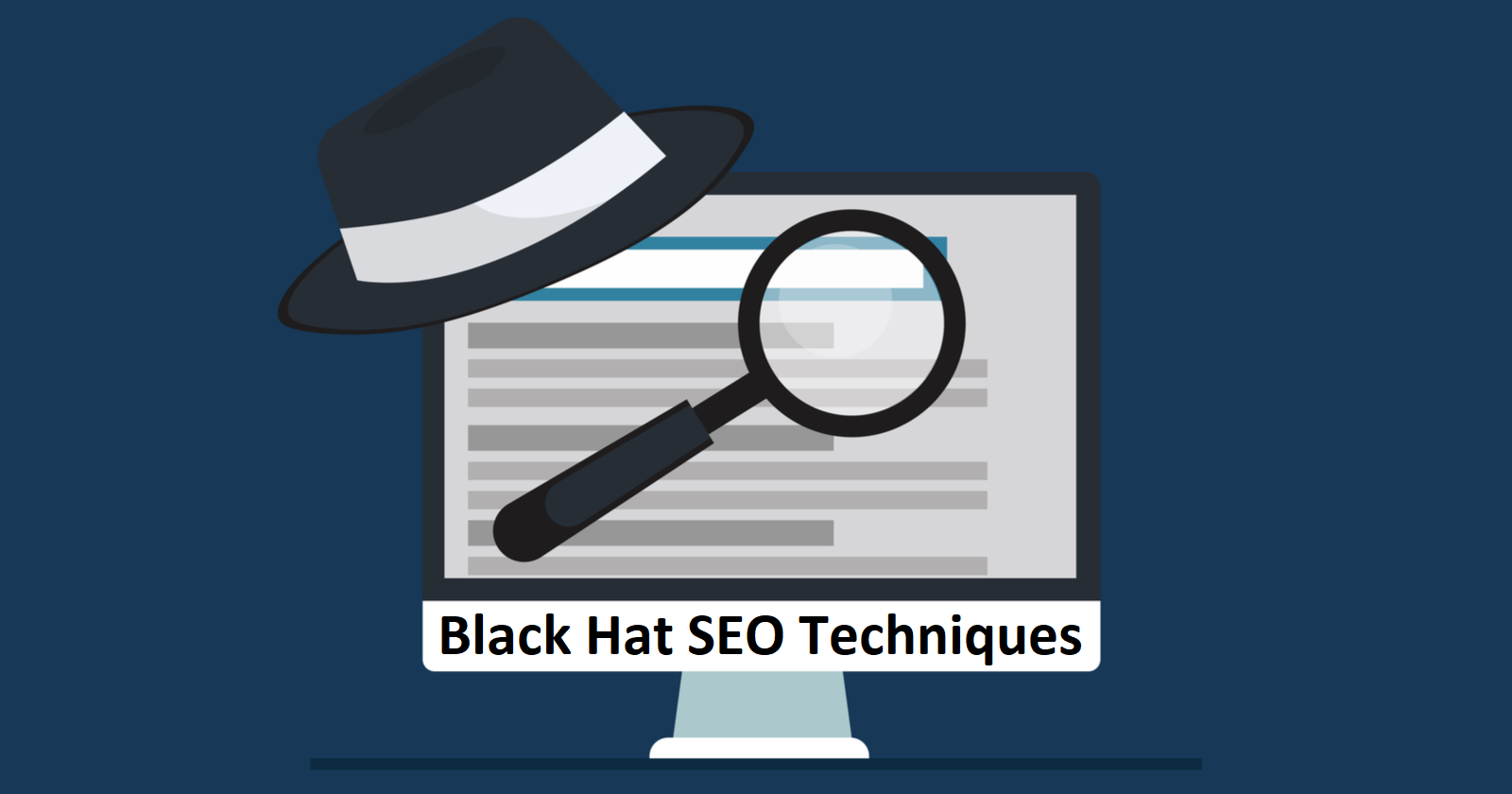What are Black Hat SEO techniques?

Contents [Show]
Google loves its users. It loves them so much that it constantly updates its search algorithms to continue providing them with the best and most relevant results.
While this benefits just about anyone using the search engine, it can get annoying for SEO specialists, content marketers, and web developers to keep up with these changes. To ensure they’re on the right track, Google created the Webmaster Guidelines.
Despite this, some people would still risk themselves by breaking the rules and taking the easy route so their sites can rank high in search engines. How? Black hat SEO.
In this post, you’ll learn what black hat SEO is, why you should stay away from it, and the most common techniques used by black hat practitioners. And so, let’s not keep you waiting any longer. Let’s get to it!
Also read: SEO Challenges
Black Hat SEO – What Is It?
Black hat SEO refers to unethical tactics that improve a site’s ranking on the search engine results pages (SERPs). Instead of following Google’s (or Bing’s) guidelines, it manipulates the algorithms in the opposite direction.
Black hat SEO practices aim solely at the top of a SERP and results usually come fast. However, as soon as Google or Bing finds out a website is breaking its rules, that website will be penalized either algorithmically or with manual action, leading to a decline in ranking and organic traffic. In more serious cases, the website will be banned indefinitely.
Although SEO practitioners and marketers are aware of the consequences, there will always be a small percentage who wouldn’t hesitate to outsmart the system and try to fast-track their way to the top. Then again, even if black hat techniques prove to be effective, the results are more than often short-lived.
Here’s a fun fact: “black hat” was inspired by old cowboy films where the bad guys wear black hats.
Why You Should Avoid Black Hat SEO at All Costs
No matter how desperate you may be to secure a top spot in Google or Bing, turning to black hat SEO should never be an option to consider. Again, deviating from their rules can result in a penalty, hurting your website and your reputation as a business.
Keep in mind that the sanctions imposed vary in terms of weight. They normally imply a decrease in ranking, organic search traffic, restriction in publishing new content, and a lower PageRank score. Not to mention, there’s the possibility of getting your site delisted entirely from the search results.
While there’s still a chance to make up and get back into Google’s good side, it takes plenty of time and works to recover from a penalty. Reversing a punishment requires identifying your bad SEO practices and correcting them immediately. You will also need to optimize your site with quality content.
So, to guarantee that you don’t have to go through all these troubles, do not use black hat SEO techniques.
The 5 Common Black Hat SEO techniques
It’s important to note that not everyone who uses black hat SEO is doing it on purpose. Others are completely incognizant that they’re implementing unethical practices. Who knows, you could be one of them!
For this reason, you must familiarize yourself with the most common black tactics that will harm your rankings and lower your odds of discovering your site by potential customers. Here are five of them:
-
Keyword Stuffing
With keywords as the foundation of search engine optimization, it’s not surprising that many people are fond of filling their content with the keywords they aim to rank for. Using the right keywords will undoubtedly help search engines understand what your page is all about, but overusing them can only get you in hot water.
This practice is known as keyword stuffing.
Using the same terms over and over makes your content sound unnatural and can make your website appear spammy to your audience and search engine bots.
Especially now that Google has gotten very good at detecting keyword stuffing, you want to use keywords as moderately and naturally as possible. Plugins like Yoast SEO or Rank Math can help monitor your usage, so you should use one.
-
Article Spinning
Similar to plagiarism, article spinning involves copying posts from other websites. The difference is that the latter focuses on reusing the same ideas and rewording the paragraphs. Some even churn out their articles with the help of AI paraphrasing tools.
Not only will this get you penalized by Google, but it can also put you at risk of getting sued by the publisher you stole your content from.
We can’t deny that it’s almost impossible to write about a topic that hasn’t been covered yet. Whether you wish to list the best places to hike or create a quick guide on marketing for beginners, there’s a massive chance that you could find tons of articles about them online.
It’s alright if you’re covering topics that have already been covered. The key is to keep it original by staying true to your tone and voice. You might also want to use original photos.
-
Spammy Link Buying
As with keywords, high-quality links play a vital role in SEO. They can help drive organic traffic to your site and establish you as a thought leader in your industry. Plus, they give Google a better idea of what your site’s all about, making it easier to rank you on the results page.
Since earning good links may take time, many site owners buy them instead of waiting. Little do they know, they’re only getting themselves in trouble with Google. The search engine can now distinguish links that have been bought from those that have been earned.
-
Content Hiding
Hiding content on web pages is probably one of the most devious black hat SEO tactics one could ever do. Sneaky webmasters conceal certain text by making them the same colour as the background so their visitors won’t see it, though it’s still visible to search engines. Others place it behind an image or use a font size of zero.
In most cases, this practice is used to stuff a page with keywords. However, just because humans can’t see the hidden content doesn’t mean that bots can’t. Expect your rankings to go down if you’re engaging in this SEO no-no.
-
Cloaking
Cloaking is another deceptive technique used by people who intend to boost their search rankings quickly. It’s been around for many years now. It involves presenting different content or URLs to users and search engine crawlers.
Cloaking violates Google’s guidelines simply because it provides the audience with results that are way different from what they were expecting. Users will visit a site, hoping to see the content they were looking for, only to get bombarded by insecure site issues, irrelevant ads, and even malware. It’s an attempt to rank a page based on content made for search engines while leading visitors to another place.
Once Google discovers that you’re cloaking for a better ranking, it will more than likely blacklist your website or permanently ban it.
Final Thoughts
Again, the results generated from black hat SEO are short-lived. You might find yourself smiling from ear to ear when you see your site ranking on the first page of Google’s search results but don’t be shocked if you can’t find it again the next day.


0 Comments